HPE’s Ulrich Seibold On GreenLake’s Mulitcloud AWS, Azure Prowess And How Partners Can Get A ‘Huge Business Advantage’
New HPE Worldwide Vice President of GreenLake Partner & Service Provider Sales Ulrich Seibold says the edge to cloud service powerhouse is already able to provide a single bill for complex AWS and Azure services combined with GreenLake.
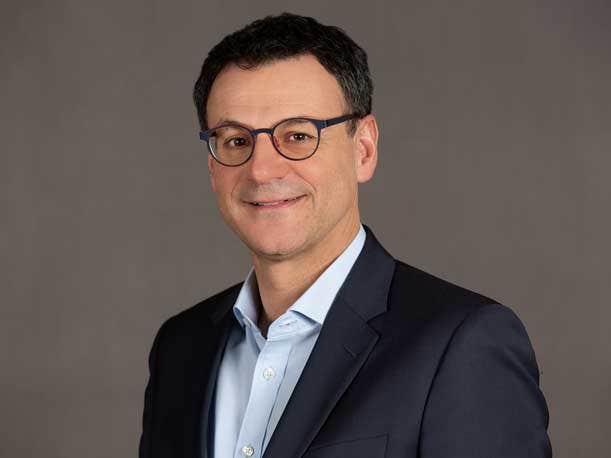
A Single Multi-Cloud Bill With HPE GreenLake Metering
New Hewlett Packard Enterprise Worldwide Vice President of GreenLake Partner & Service Provider Sales Ulrich Seibold wants to make sure partners understand GreenLake’s multicloud prowess and the ability to provide a single customer bill for multicloud consumption with GreenLake’s metering capabilities.
“This is not a vision,” said Seibold of HPE’s ability to do complex consumption metering in a multicloud environment with the likes of AWS, Azure and other clouds. “You can get it. With metering we have the ability to integrate it through our platform and we can provide one bill. The data and cost element we can integrate into our platform and provide one bill.”
That single bill for on premise and off premise clouds is one reason Seibold’s worldwide GreenLake responsibilities include not just commercial partners but also hyperscalar public cloud providers and service providers.
The GreenLake multicloud capabilities translate into a big advantage for partners who are grappling with how to help customers deal with the “hundreds of different clouds” in the market. “If we bring that all together the partner is a one stop shop,” said Seibold. “That is a value add for partners.”
As to HPE’s AWS and Azure prowess, Seibold said HPE is ensuring partners can help customers derive data insights from where ever their data resides in public clouds like AWS or Azure or on premise.
“We don’t care anymore where the data is,” he said. “What we care about is having an integrated element like we talked about with (Amazon Web Services) EKS or Azure and through our platform with metering. So we can deploy through our platform one invoice to the partner independently whether it is from Amazon or Microsoft or on the service provider side or it is out of our own (GreenLake) platform. If we bring these values then it is clear that we need to bring the service provider community, the partner community and the hyperscalars closer together.”
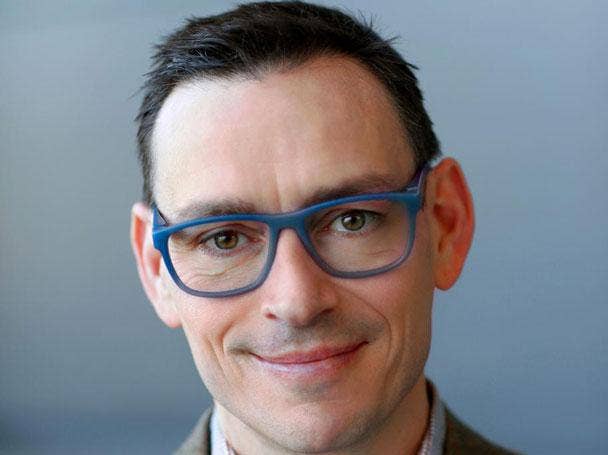
Can you start by talking a little bit about your background and nearly 40 years of experience at HPE and HP?
I’m a long term veteran at HPE and I have worked more than 10 years in the partner ecosystem. My boss at one point in time was (former HPE Worldwide Partner Sales leader and current Managing Director of North America) Paul Hunter (pictured).
I spent 10 years was overseeing the DACH (Germany, Austria and Switzerland) partner ecosystem of resellers, service providers, systems integrators and ISVs.
Then my boss told me ‘You are in a comfort zone.’ I did not want to be in a comfort zone so he asked me to build out the GreenLake business unit. That is the role bringing two elements together: long term partner experience on the left hand side and my three and a half years of GreenLake knowledge on the other side.
After (HPE Vice President of Partner Experience) Maurice (Martin) left the company (in January) I thought there are not that many positions in a global scale that includes both channel partners and GreenLake. So I raised my hand and now I’m in this new role.
It is a replacement for Maurice Martin but we made some changes (with the position). From a responsibility perspective there is the (GreenLake) platform, transformation, processes for simplification which is very important for our partners. Then we added the service provider and hyperscalar to this position because it is important to include colos (colocation providers). So the elements are partners, service providers, hyperscalars and colo providers.
How big difference does it make adding service providers, hyperscalars and colo providers?
We want to make it easy and simple for partners.
We had two or maybe three different organizations driving partner business in terms of GreenLake. So we brought it all together so we’ll have one HPE GreenLake stream and then we will have a traditional stream and then we’ll have a third one with ISVs and systems integrators.
So we have a clear positioning for partners. It will be very clear in the future who is responsible and who will be my counterparts if I need to talk about HPE GreenLake because we want to help partners achieve more margin. So my team will be working from a global perspective to support partners and to find and identify the benefits we can bring to our customers through our partner community.
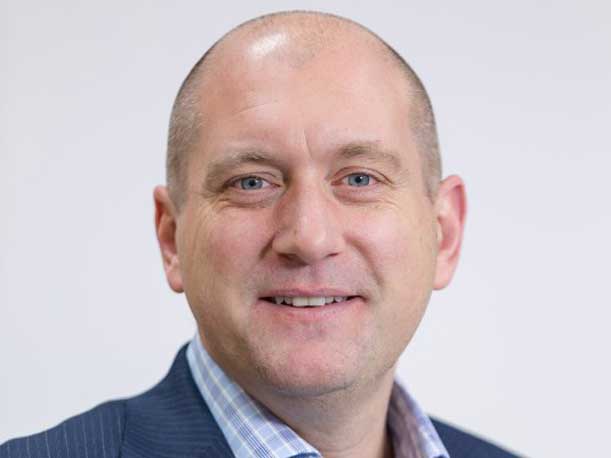
How will the structure work with regard to ISVs and systems integrators?
We will have a dedicated organization within Simon Ewington’s (pictured) team as an interim lead. So we will have one team responsible for the ISVs and (Interim leader of Worldwide Channel & Partner Ecosystem and Vice President of Worldwide Distribution) Simon (Ewington) responsible for the traditional partner community and as an interim lead for the whole partner ecosystem and then I will be overseeing GreenLake and (HPE Vice President Worldwide Partner Programs and Operations) Jesse Chavez as the lead for all partner programs.
How do you see the GreenLake model evolving under the new structure?
If you look at HPE GreenLake it is the brand right now. It is not a solution or a product anymore. Then with the GreenLake cloud platform we will bring more and more of the traditional business under the GreenLake platform. So in the future there might not be a partner in the traditional or GreenLake way.
Partners are selling products in a traditional way and then selling subscriptions out of the GreenLake platform. We are bringing these business partners together helping them move forward.
If they are today in a model where they are selling traditional products then I believe subscription is an easy step for them to improve their skill sets and value proposition. So they can buy, for example, block storage with HPE Alletra in a traditional way and then on top of that bring a subscription out of the GreenLake cloud platform.
For partners a little bit more mature they can buy a standardized service out of the GreenLake platform as a service in a consumption manner.
Then the third model for the most mature partners that have service provider, managed service provider and consulting capabilities is our customized cloud service element. This is something in the past we did a little bit more direct in the ratio to partners.
So we basically have three elements: GreenLake as the brand and the platform. Every service we provide if it is Aruba or storage or compute all the software will be deployed through the platform. Beyond that partners can buy and sell to their customers in a traditional, buying or lease for example, they can do it as a service, and the third element is a customized GreenLake cloud service.
(HPE CEO) Antonio’s (Neri) strategy is journey to one. Through the GreenLake cloud platform we can make that happen. Everything HPE will deliver in the future will be out of the platform in a traditional way, in a consumption way or in a customized cloud service way.

What are your top priorities as you move forward with that strategy and how will it impact partner profitability in the different partner segments?
First of all you know we announced our HPE Partner Ready Vantage program a couple of quarters ago. Seven weeks from now in Las Vegas at HPE Discover we will announce the next steps and basically the program itself and the content behind it. I can not talk about the details but basically more for more with competencies and the learning aspect, the certification aspect and the third element will be intellectual property.
If partners develop their own software and intellectual property integrated into our platform with our services capabilities then they will have a huge advantage because then they will have a very integrated HPE and Partner led solution. That’s basically the three elements of the HPE Partner Ready Vantage program.
What’s the call to action for global partners to prepare for the next step in HPE Partner Ready Vantage?
It really depends on where the partners are. If the partners are the most mature then it is to develop intellectual property. They need to look into the software stack not just IT infrastructure. We need to be business enabled for our end customers. It’s not just selling. So partners need to be able to implement and transform and maybe operate solutions. And If it is well integrated (with HPE GreenLake) it will be a huge business advantage. So that’s one element.
The other element is if you are not so mature or you are a partner that does not have the size to do that or are selling more in the traditional way I believe our GreenLake cloud platform with subscription is a good choice. That is something we do ourselves as individuals with Netflix or other services. So this is I believe the easiest step to go forward to come from traditional selling to more of a service. The second step for these partners is once they have that experience with subscription they can standardize.
Standardization is key for me. We need to develop and deliver standardized services to partners. It could be backup as a service, VM as a service, bare metal as a service, container as a service. But not customized. It needs to be standardized. This is something over time partners can learn. We can help them and support them to integrate, to implement and maybe to operate if they do not have their own capabilities to do that.
So if you ask me for the vision and the priorities it is to get more and more partners selling HPE GreenLake and this will happen automatically through the platform through subscription.
The second point is repeatability. We know our partners. They love to sell standardized workloads and they need to be able to repeat it. So we need to bring these services to them in a way that they can sell it once, twice and ten times in the same way. That is very cost efficient for them from a skill set perspective.
So partner recruitment and repeatability are key elements and this will only happen through standardization. So we will bring more and more standardized services offerings through the GreenLake platform. Today we have very customized offerings. But we started with the HPE Alletra announcement and standardized services.
We have HPE Aruba networking already. So HPE will deliver more and more standardized services. We have a very, very strong indirect ratio in some Geos (geographies) at 60 percent and others in the 70 percent range and some in the 80 percent range.
My long-term personal goal will be with HPE GreenLake we will be at the same (indirect) ratio. If you think of HPE as a powerhouse in the partner ecosystem if we achieve this goal being on the same indirect -direct ratio as in the traditional business today I believe it will be a huge step forward together with the partners. That’s because our partners will be able to from my perspective be business advisors. So they will become more and more business relevant for their customers. This helps them a lot. So they will not just be talking about price or performance. They can really talk about how to achieve data insights and how to earn money from data.
You know our strategy is hybrid from edge to cloud platform as a service. For our most mature partners they will be able to integrate with Amazon EKS or Azure Stack with an end to end platform on prem or off prem. If we achieve that delivering services to the partner community from the edge to the data center or a colo or to a hyperscalar and implement that in a customer environment these partners will have the best life in the future. That is my personal goal to achieve something like this.
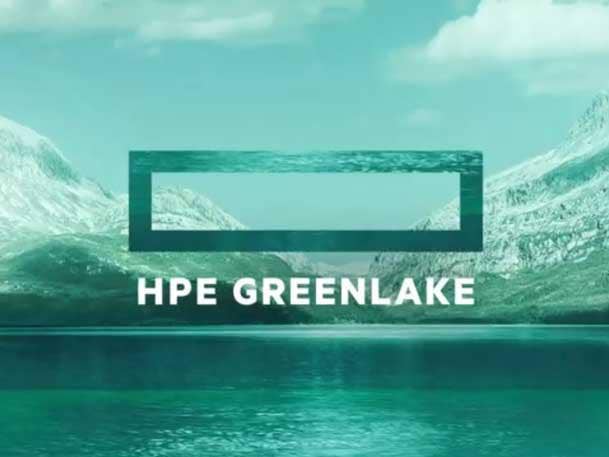
What is the goal with respect to driving the indirect-direct mix of GreenLake through the channel?
So the expectation in the long run is the partner share will basically be doubled. It’s not just doubling from one to two. It is billions of dollars in business.
I know from a worldwide perspective we are in the range of 70 percent in the traditional business. My goal is to achieve growth with HPE GreenLake to that indirect ratio. This is the message for partners. We are a partner company. I was working with partners for 10 years before I joined the GreenLake team.
How important is the HPE partner commitment given what you see with other as a service models from competitors?
We see a lot of elements that show our competitors are doing it more in a direct way. For what ever reason they are doing it I smile about it.
We as HPE we can scale but we can not double or triple over time. We need to have our partner business model because this is our strength. I am a long term veteran. I am more than 30 years in this company. We have always worked with partners- always!.
Since I came into this company we have always worked with partners. I know Bechtle AG (Germany’s largest independent IT systems integrator) was founded in 1983 and have always worked with us. We worked with them from a small five employee company and they are now larger than us in Central Europe. They did it with a very strong relationship with us.
If we want to grow HPE we need to work with partners. We are growing tremendously (with GreenLake) but over time we can not add hundreds and thousands of additional people to bring it to market. Our company’s success will be very closely aligned with our partner’s success. That is why I am so confident that we will achieve the same ratio of indirect-direct sales whether it is 70 or 65 percent. We need to bring the partner share to the same level it is today then we will be super heroes in the partner market.
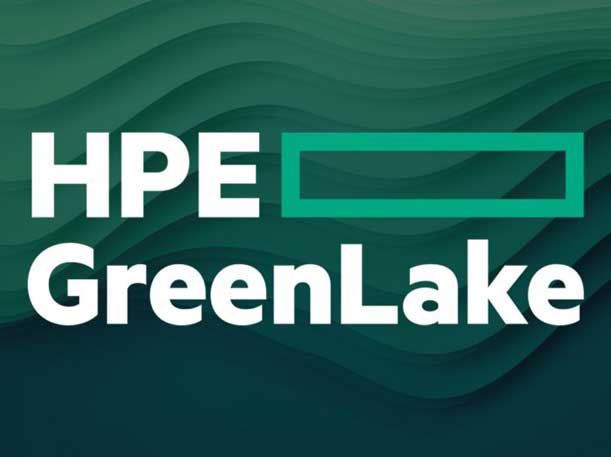
Does that mean we will see a greater emphasis on the subscription market versus a customized model which can be complex and time consuming?
We are not always the easiest to do business with. Mostly every (GreenLake) solution was highly customized.
Highly customized means a long sales cycle.
We can only scale over time through that element of standardization. This is something you see now with the Alletra announcement and the the network as a service announcement.
More and more will come to the platform as a standardized service. By the way even today you can get from us Red Hat as a service standardized, VMware standardized, bare metal standardized or containers standardized.
This is something we need to do from an enablement and education perspective. People tend to do it for whatever reason in a highly customized environment. If I buy something from a hyperscalar I don’t ask for the configuration behind it. But our own people and our partners are asking for customized (GreenLake solutions). This is something we need to overcome. We need to sell standardized solutions because not every customer is totally different.
Because we have the as a service model and we can scale up and scale down, if we are a little bit too high we can scale down. If we are a little bit too small we can scale up because we have this buffer in the environment.
Our people are looking now at what customers might need in three or five years. This is not sustainable or cost efficient. As you said it is a very long sales cycle. So we need to convince people to go more, if possible, for a standardized workload. It is there already and more and more will come. And then your sales cycle will be easier. You will have a fixed configuration, a service on top of it and by the way in the service world we want to sell the service not the hardware product anymore.
What is the difference between HPE and Dell Apex in terms of the partner commitment?
One element of this is partner commitment. You can trust us. We believe in partners.
For partner reps selling infrastructure they need to be able to convince the customer it is service they need to buy. It is a different sales method, a different way to deploy it, a different operation.
It is not just standardized on our side. The customer with the hybrid model should standardize as well because it is all about data whether the data is at the edge or in the data center of the partner or customer or in the hyperscalar world.
In the past we had to bring all these data lakes together. We need to know where the data is. Think about what we have with HPE Cloud Physics we know whether the data is at the edge or with the hyperscalar and then if needed – and this is important- if needed we can move the data from the data center to the hyperscalar or if it is more beneficial we move the data from the hyperscalar back to our data center. We don’t care anymore about where the data is. Then if you have a discussion with the customer it is no competition.
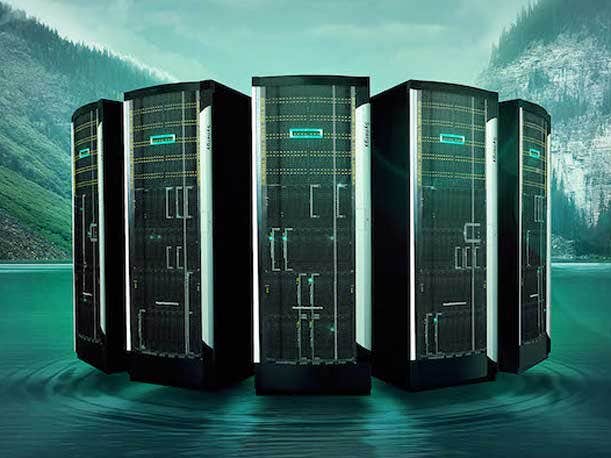
How important is it that you are doubling down on service providers and even hyperscalars?
If we talk about multicloud then we need to have all aspects in mind. This means traditional resellers or system resellers or system houses doing managed services and services provisioning as well. Then there are the pure traditional service providers and the hyperscalars. Because as I said we don’t care anymore where the data is. What we care about is having an integrated element like we talked about with (Amazon Web Services) EKS or Azure and through our platform with metering.
So we can deploy through our platform one invoice to the partner independently whether it is from Amazon or Microsoft or on the service provider side or it is out of our own (GreenLake) platform. If we bring these values then it is clear that we need to bring the service provider community, the partner community and the hyperscalars closer together
Many of our customers are not willing or able to build their own data centers anymore. And not everyone is willing to go to a colo because colos need to bring additional services on top of it. A service provider can deliver that. It is not just about infrastructure. They can provide you SAP services or what ever type of additional value add you need. And then you have the other data they have with hyperscalars. If you bring these worlds together it is pretty clear you have all these four elements and aspects under one responsibility.
So can partners or customers today get a single bill for GreenLake, AWS, Azure or Google Cloud?
That is not a vision. You can get it. With metering we have the ability to integrate it through our platform and we can provide one bill.
The data and cost element we can integrate into our platform and provide one bill. Then if you think about a partner and they have Salesforce or Amazon or hundreds of different clouds in the market if we bring that all together the partner is the one stop shop. That is a value add for partners.
How many partners are doing that now?
Not too many. This is the high end. But I have partners who are able to move data in seconds from Microsoft (Azure) to their own data center and back. That can be done with SAP and then they have integration of ServiceNow and they provide services exactly at the point that fits best for them and for their customers. If we have more partners like this it will be the future from my perspective of the high mature and high value partners in the world.
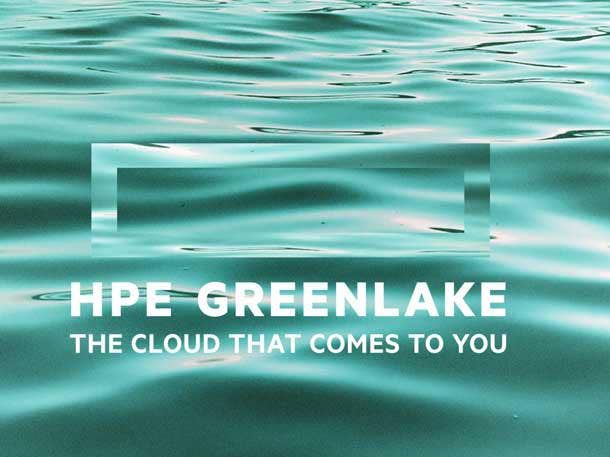
What is your number one overriding top priority as you take the top worldwide GreenLake job?
To make most of our partners happy at the moment we need to standardize. My personal long term vision is to develop these partners into the as a service world through subscription to consumption into a more customized environment from edge to cloud. That is the hybrid story that Antonio has talked about providing for four or five years now with edge to cloud platform as a service.
My dream is standardization, repeatability and then moving along to where many partners are today with GreenLake. But that is not the majority of the partners. We need more and more of these partners (with their own customized cloud services). But we should not forget most partners are more in the standardized traditional selling model. But we will not forget our most advanced partners. That has to do with HPE Partner Ready Vantage. We want those partners to integrate their IP (intellectual property) into our solutions. We want to be their best friends as well.
How important is Partner Ready Vantage going to be to the future of the GreenLake model?
It is the framework. A program is always a framework. Most importantly are the people and that we are doing what we promised.
How do you feel taking this job at this moment given the future of HPE GreenLake?
I had my first call with my new team and I told them It feels to me like coming home. That’s because I know so many people (on the GreenLake team). I have been working with them for the last three years with a different focus. So many people I have worked with for the last 10 years are still here. This will help me a lot to gain traction.